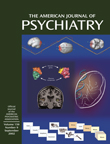Abstract
OBJECTIVE: Structural neuroimaging studies have suggested an association between schizophrenia and abnormalities in brain morphology such as ventricular enlargement and differences in gray matter distribution. Less consistently reported are findings of regional abnormalities such as selective differences in thalamic volume. The authors applied an unbiased technique to test for differences in cerebral morphometry between patients with schizophrenia and matched comparison subjects. METHOD: T1-weighted images from 20 schizophrenic patients and matched comparison subjects were processed by using optimized automated voxel-based morphometry within multiple linear regression analyses. RESULTS: Global differences in gray matter volume were seen between the schizophrenic and comparison subjects, with selective regional gray matter differences noted in the mediodorsal thalamus and across cortical regions, including the ventral and medial prefrontal cortices. Within the schizophrenic subjects, a relationship was observed between gray matter volume loss in the medial prefrontal cortex and a positive family history of schizophrenia. There was no significant difference between patients and comparison subjects in rates of proportional gray matter reduction with age. CONCLUSIONS: These observations confirm an association between thalamocortical morphometric abnormalities and schizophrenia, consistent with theoretical models of primary pathoetiological dysfunction in filtering, integration, and information transfer processes in patients with schizophrenia.



